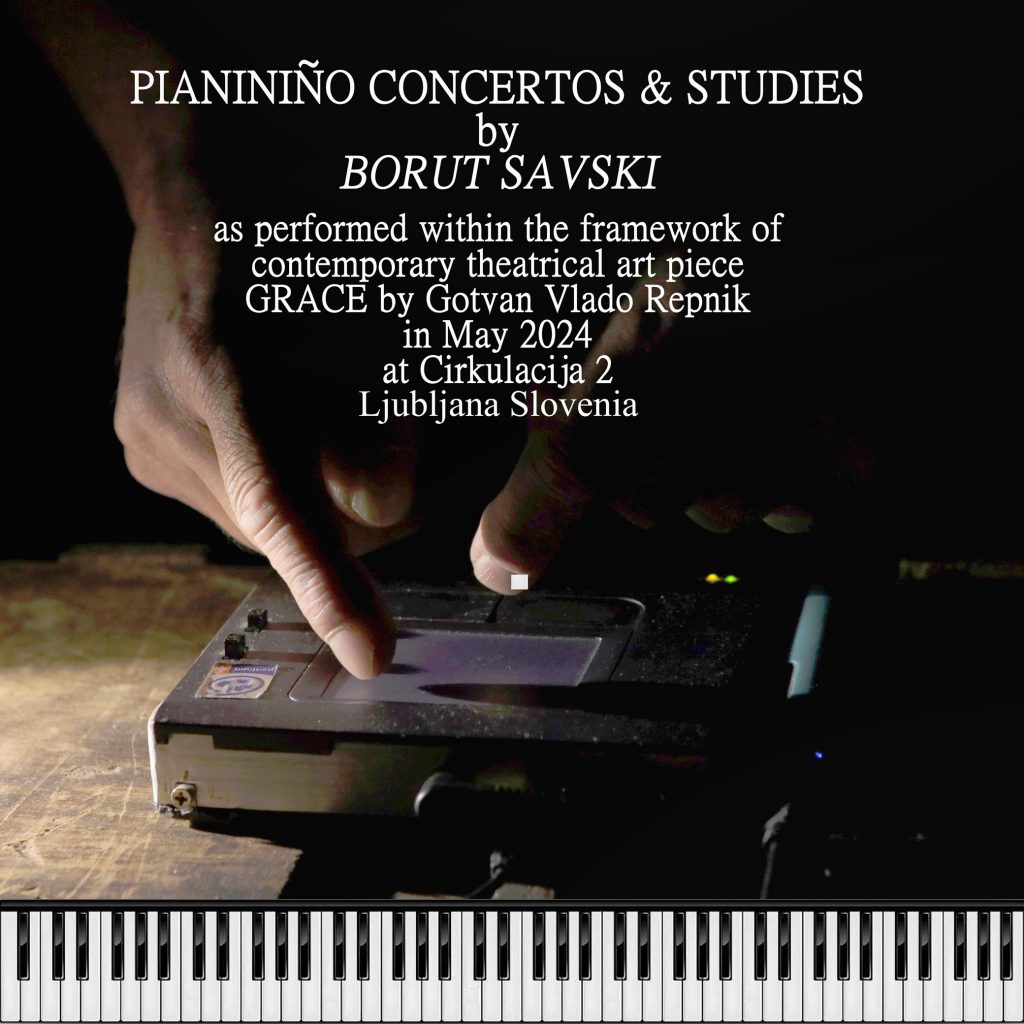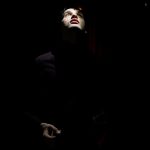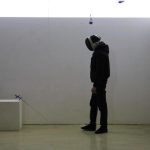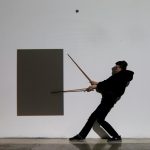Glasbeni album sestavljen iz posnetkov klavirskih koncertov v predstavi MILOST/ poskus nekega dotika.
Klavirski koncerti na ravni elektronskega vmesnika z zvokom klavirja. Kljub temu odigrano skrajno resno pred živimi publikami z vsakič okoli 30 do 40 obiskovalci. Spodnji izbor sestavljajo štirje celoviti posnetki izvedenih koncertov in pet študij, ki so se do neke mere lahko izvile stran od osnovne ideje poudarjanja tišine in nedorečenosti fraz.
Izhodišča za moj koncertni pristop so bila dvojna, če ne trojna.
Najprej citat o čisti glasbi, kar je bilo nedavno izhodišče – vključeno tudi v tas pristop:
“Čista glasba je tista, ki je povedna sama po sebi. Ne potrebuje vsebine / družbenega konteksta. Je ideja (ne potrebuje telesa?). Nastaja kot logična (cerebralna?) dejavnost (glava brez telesa?). Je ideal, ki se mu približuje z redukcijo elementov družbenosti (družabnosti?). Čista glasba ni iskanje naravnih vzorov ali naravnih virov – ni mimetična. A vse to so le izhodišča.”(Borut Savski)
Posebna zgodba je uporaba povsem neugledne plastične škatljice, ki je na videz le del starega prenosnega računalnika, ki pa ima novo notranjost in povsem ugledno funkcionalnost na ravni uporabe. Pri celovitem končnem učinku seveda parazitiramo na vsej veličini zgodovine klavirja – in še posebej na meščanskosti in visokokulturnih ideoloških predznakih, h katerim zlahka pritegnemo vzporedna družbena gibanja konca 19. stoletja in začetka 20. stoletja. Ta seveda niso pozitivna. V sedanjem času je virtuozno igranje klavirja še vedno vrhunski dosežek, h kateremu težijo vedno bolj številni. A po še vedno prisotni težnji po genialnih posameznikih je le malo izbranih. Uporaba neuglednega pianina je torej tudi komentar na to represijo. Kot rečeno, pa je bila naprava odigrana skrajno resno.
Če verjamemo, da je glasba vedno spevna, torej melodiozno-ritmična, ki ji sicer včasih umanjka pevski del (pravimo, da je instrumentalna) – vendar je do nedavne pojave glasbenega eksperimenta še trdno ohranjala spevno melodično-ritmično linijo. Spevno pomeni podporo petju, ali pa strukturo, ki oponaša petje. Petje ima ponavadi besedilo, ki so stavki – ti nosijo pomen. Glasba je tako pomenska, tudi če je instrumentalna. Melodično-ritmične strukture sicer lahko govorijo abstraktni glasbeni jezik, ki ga morda le ne razumemo preveč dobro. Če se skušamo izogniti tej determiniranosti glasbenega besedovanja, tedaj se znajdemo v polju redukcije in sekanja besed na neizrečene pomene – v grobem zloge. Tudi nebesedni glasovi imajo tu svoje mesto. No, tudi nebesedni glasovi pogosto niso nepomenski. Nekateri pa vendarle so.
Praznino (in nepomen) je bilo treba zgraditi na način poudarjene fragmentacije zvočnega toka. Časovna oddaljenost med posameznimi (mikro) frazami vnašajo obilo priložnosti zaznave tišine. Tišina nastopi ob zaznavnem umanjkanju zvoka – vsakič znova. Zato mora seveda predhodno zazveneti zvok – in odzveneti. Izzven je že najava tišine, ki ji je bilo potrebno dati obilo prostora. Naslednji zlog/ fraza tudi ne sme biti nadaljevanje prejšnje/ga – kar sem zavestno poskušal delati predvsem v koncertnih izvedbah. Tu sem se namenoma odmikal od izvajanja pomena – pripovedovanja/ besedovanja.
V koncertnih izvedbah je bilo vodilo v prostoru sestaviti tri strukture: ena je bila seveda zvok klavirja, drugo je bilo dogajanje na soprisotni video-projekciji zelo počasne, celo svečane, dinamike. To dvoje namenoma nismo usklajevali/ sinhronizirali – celo več: med igranjem zvoka sem bil obrnjen k publiki. Namen je bil ustvariti nepovezano/ asinhrono sobivanje zvoka in slike, kar po mojem predvidevanju omogoči stvaritev nezapolnjenega prostora – z zavestjo, da človeški um neogibno sestavlja prisotne elemente v koherentno celoto – integrirajoči aparat. Tretja prisotna aktivno sodelujoča substanca je bila torej publika – oziroma vsak prisoten posameznik.
V pomoč verodostojnosti zvoka je bilo šest Castratov – vibracijskih zvočnikov, nameščenih med publiko. Predvidevanje je bilo, da bodo pomagali neposredneje občutiti zven (klavirja?).
Glasbeni album sestavljen iz posnetkov klavirskih koncertov v predstavi
MILOST
poskus nekega dotika
· scenarij in režija: Gotvan Vlado Repnik
· dramaturgija: Nina Meško
· performiranje: Borut Savski
· performiranje: Tatiana Kocmur
· a=tF²: !gor #352;
· performiranje: Jernej Šmid
· performiranje: Marko Batista
· video zasnova: Simon Svetlik
· montaža: GVRLAN
· supervizija: Simon Kardum
· fotografija: Sunčan Stone
· produkcija: GVR Zavod sodobnih umetnosti
· spletna stran: https://babalan.kibla.org/milost/index.html




